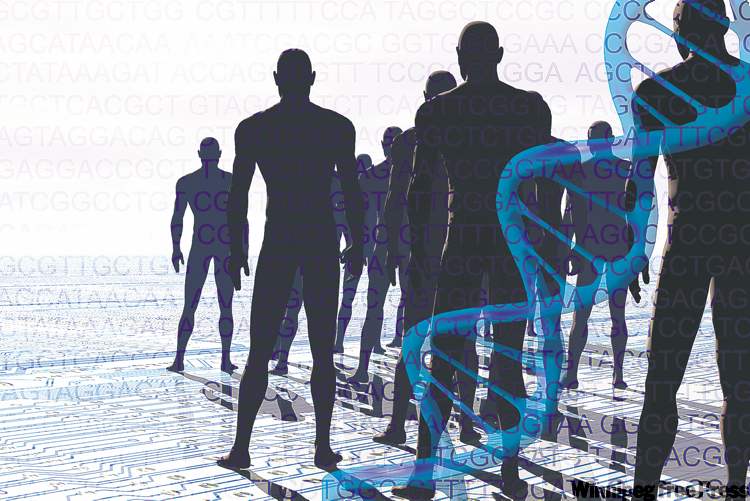More than a fingerprint
DNA at crime scene could be used to generate suspect's description
Advertisement
Read this article for free:
or
Already have an account? Log in here »
To continue reading, please subscribe:
Monthly Digital Subscription
$0 for the first 4 weeks*
- Enjoy unlimited reading on winnipegfreepress.com
- Read the E-Edition, our digital replica newspaper
- Access News Break, our award-winning app
- Play interactive puzzles
*No charge for 4 weeks then price increases to the regular rate of $19.00 plus GST every four weeks. Offer available to new and qualified returning subscribers only. Cancel any time.
Monthly Digital Subscription
$4.75/week*
- Enjoy unlimited reading on winnipegfreepress.com
- Read the E-Edition, our digital replica newspaper
- Access News Break, our award-winning app
- Play interactive puzzles
*Billed as $19 plus GST every four weeks. Cancel any time.
To continue reading, please subscribe:
Add Free Press access to your Brandon Sun subscription for only an additional
$1 for the first 4 weeks*
*Your next subscription payment will increase by $1.00 and you will be charged $16.99 plus GST for four weeks. After four weeks, your payment will increase to $23.99 plus GST every four weeks.
Read unlimited articles for free today:
or
Already have an account? Log in here »
Hey there, time traveller!
This article was published 02/01/2011 (5422 days ago), so information in it may no longer be current.
Killers and crooks, clean up after yourselves.
Scientists appear to be on the cusp of being able to develop physical descriptions of criminal suspects based on an analysis of the DNA left behind at a crime scene.
The latest breakthrough in this emerging field, known as forensic phenotyping, came just a few weeks ago when a group of Dutch scientists announced they had devised a test that allows them to reliably predict someone’s age — to within nine years — based merely on a blood sample.

That same group has previously said it can also predict eye colour using similar methods.
The scientists say their findings could help investigators narrow down the search for suspects and revive “cold” cases where there are no eyewitnesses, or where DNA from the crime scene doesn’t match any profiles already stored in criminal databases.
“Our approach is expected to provide investigative leads in criminal cases by allowing an accurate estimation of the generation age of unknown individuals from minute blood stains,” the team, based at University Medical Center Rotterdam, wrote in the journal Current Biology.
Mark Shriver, an associate professor of genetics and anthropology at Penn State University, said in an interview Friday that analysis of DNA sequences can also yield clues about a someone’s genetic ancestry, skin pigmentation — even their facial geometry.
A genetic-testing company he’s worked with in Florida was credited with helping authorities home in on a suspect in a series of rapes and killings in Louisiana. Police had initially been led to believe the suspect was white and collected DNA samples from more than 700 Caucasian men from the area.
But the Florida company tested DNA recovered from one of the crime scenes and determined the suspect was probably 85-per-cent sub-Saharan African and 15-per-cent Native American.
“They are pieces of the puzzle that can direct their investigation,” Shriver said. “It may be better than an eyewitness.”
But some experts say while the research is promising, it also raises a number of legal and ethical questions that are only beginning to be considered.
Paul Wilson, a Canada research chair in DNA profiling and forensics at Trent University in Peterborough, Ont., said he wonders if degradation of a DNA sample at a crime scene could lead to skewed predictions of a suspect’s age or other traits.
“My first inclination is to ask: What are the technical limitations? Can you generate false results?” he said.
Secondly, he wonders if there might be occasions when information contained in a DNA-generated suspect profile might be beneficial to criminal defence lawyers. What happens, for instance, if the person apprehended has blond hair but the original DNA testing suggested that the suspect would have brown hair?
“It can be helpful in one stage and a liability in another stage,” he said.
A research paper prepared last year by the Library of Parliament noted that “one concern that has been raised about such methods is that the results could be used to justify ‘DNA dragnets’ — the collection of DNA samples from large groups of people — based on physical descriptions or race, whether or not there is any other reason to suspect them of the crime.”
— Postmedia News

